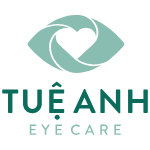BLEPHARITIS
Blepharitis is one of the most common eye diseases, accounting for 71% of inflammatory eye diseases. Blepharitis is easily overlooked or misdiagnosed leading to ineffective treatment.

Although the disease rarely affects visual function, due to the progressive nature of the disease and the intermixed exacerbations it can greatly affect the patient's quality of life.
The term anterior blepharitis refers to an acute or chronic inflammation of the anterior margin area (including the eyelashes and eyelash follicles). And posterior blepharitis is inflammation of the clogged oil glands (Meibomian glands) near the base of eyelashes.
- What are the symptoms of blepharitis?
Blepharitis symptoms are typically worse in the morning. They include:
- Itchy eyelids, accompanied by a gritty, burning, or stinging sensation in the eyes
- The eyelids may be swollen, accompanied by red, watery eyes
- Flaking of the skin around the eyes or greasy eyelids
- Blurred vision that usually improves with blinking multiple times
→ You should make an appointment with your doctor if your symptoms do not improve despite good hygiene (regular cleaning of the affected area)
- What are the causes of blepharitis?
Blepharitis is a multi-cause disease. The patient is usually in the following conditions:
- Infections: staphylococcus, eyelash lice, Demodex ...
- Malfunctioning oil glands in the eyelids
- Allergies, including allergic reactions to eye drops, cosmetics ...
- Who is at risk of disease?
The disease is common in middle age and worsens with age. Unlike posterior blepharitis, anterior blepharitis is more common among women of younger age. In addition, it is common in people who work a lot outdoors (heat, pollution, dust); people sit a lot in a conditioning environment (posterior blepharitis).
- Complications
- Eyelashes problems: Blepharitis can cause your eyelashes to fall out, grow abnormally/misdirected or lose color.
- Eyelids problems: sty, chalazion, scarring, eyelids turning inward/outward
- Eyes problems: dry eyes, frequent watery eyes, conjunctivitis, corneal injury...
- Treatment
Blepharitis treatment needs to be persistent, regular, long-term because the inflammation will worsen with age, easily recur if the patient stops treatment. The most commonly used blepharitis treatments:
- Regular eyelash cleaning is a very important measure to soften eyelashes, release the clogging of the eyelash glands, and remove sebum. Eyelash hygiene includes a warm compressing - massage - cleaning lashes
- Use artificial tears to help improve the uncomfortable symptoms caused by the disease. Antibiotic treatment when none of the above measures are effective enough.
Notes during treatment:
Eye makeup can aggravate symptoms. Limit makeup to the eye area in the acute phase of the disease.
- Day rubbing the eyelids often aggravates the disease by swelling the eyelids, causing increased inflammation of the eyelids.
Several studies have shown that the omega-3s in fish oil may improve dry eye symptoms and blepharitis in some patients. So you can add omega 3 to your diet.
You need to be treated for other conditions such as seborrheic dermatitis, rosacea, dry eyes
- The treatment process for blepharitis at Tue Anh Eyecare:
The blepharitis treatment regimen is based on the morphology of blepharitis and the severity of the disease. Treatment goals can change with the course of the disease. During the acute phase, treatment should aim to alleviate symptoms and improve the patient's quality of life with measures to reduce inflammation and reduce the density of pathogenic bacteria. For the chronic phase, treatment still needs to be followed in order to reduce acute exacerbations and prevent complications on the structure of the eyelids and eyeballs.
At Tue Anh Eyecare Clinic, after being diagnosed, classified, and eliminated the causes of blepharitis, patients will enjoy a comprehensive package of care and treatment including:
- Eyelash Care: Your doctor will advise and guide you on how to warm your eyelashes. Eyelash massage and effective eyelash cleaning. Warm compresses to help loosen secretions in the eyelash glands, easier to escape and clean. This method should be done correctly enough to both provide a therapeutic effect and not cause adverse effects on the eyelashes and eyes. So for the first few days, you may need to be directly cared for by your doctor at the clinic.
- Regimen for diagnosis, classification, and treatment of blepharitis: updated according to the international workshop on Meibomian Gland Dysfunction.
- The service package of periodic follow-up and follow-up can help prevent acute inflammation and prevent serious complications caused by blepharitis. From there, significantly improving the quality of vision is also the quality of life for the patient.

